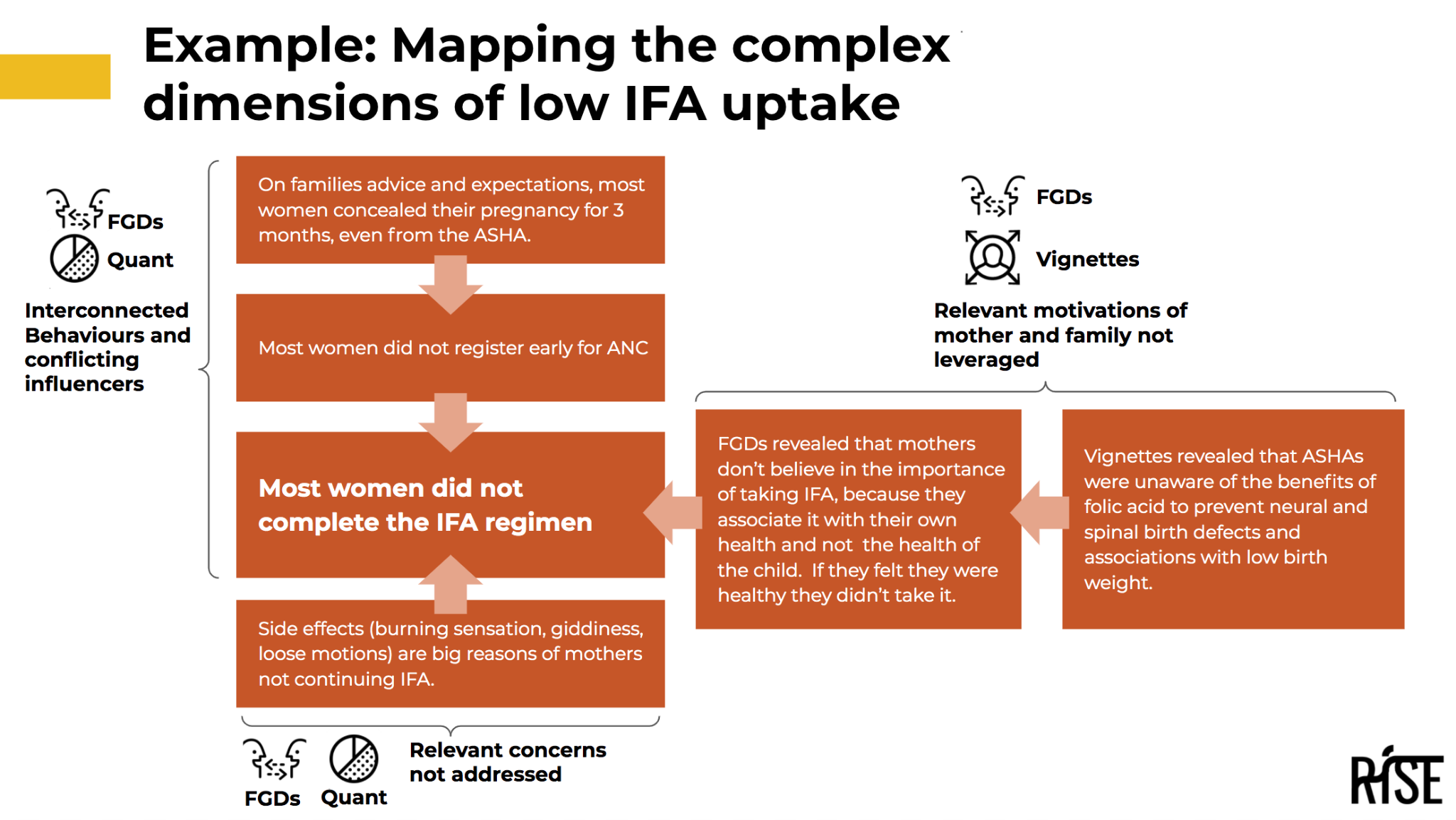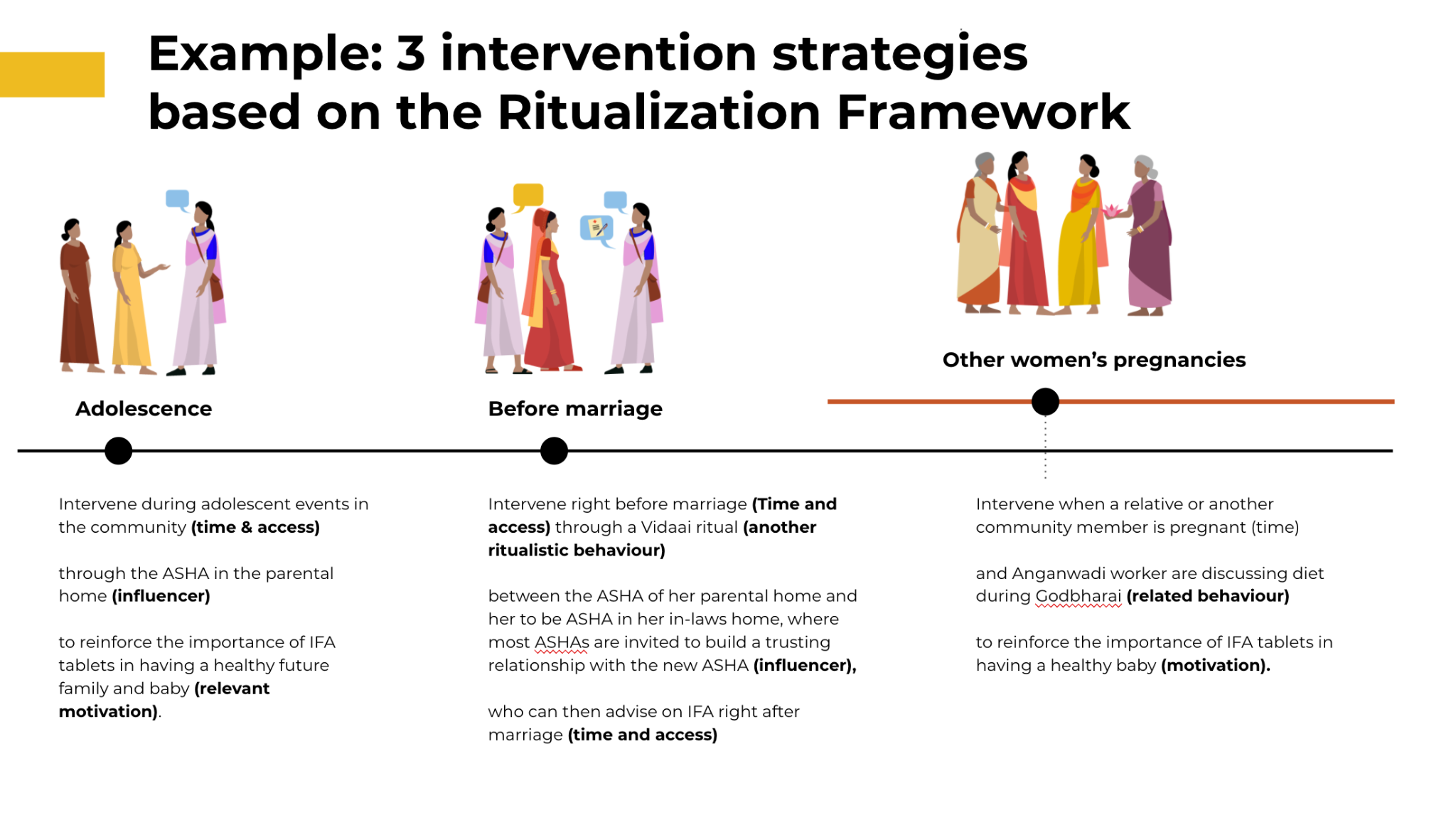10.4 Ritualization Strategy Framework
10.4.1 Four Elements to Ritualize Behaviours
The opportunity areas identified four interwoven factors that can be leveraged to enable AHSAs to become effective culture facilitators.
- Access to beneficiary at different points in time
Refers to health systems access to the beneficiary through the CHWs or through other actors of the health system. If CHWs don’t have access when a particular biomedical behaviour is supposed to be practiced, they can choose earlier moments in time when they have access to change future behaviours, or can try to influence through non-health system influencers who are present in the moment.
- Interconnected Behaviours along the journey
As a barrier, interconnected behaviours refers to norms and associated behaviours that prevent the uptake of a recommended behaviour. As an opportunity, it refers to leveraging an earlier ritualistic or biomedical behaviour, that communities are already doing as an entry point to structure future behaviours.
- Types of influencers along the journey
Influencers refers to actors in the health system, community or the household, that have a significant influence on the uptake or lack of uptake of behaviours. The influencers involved and their effect on the behaviour, varies with the type of behaviour (biomedical or traditional), access to the beneficiary when the behaviour is supposed to happen, and also the type of family.
- Relevant Motivations of the beneficiary and influencers
Motivations refers to the reasons for beneficiaries doing or not doing a behavior and for influencers supporting, blocking or gatekeeping a behaviour. If the reasoning regarding a biomedical behaviour is in conflict with, or not aligned well with the relevant motivations of the beneficiaries and their families, the behaviour will either not be taken up by the beneficiary or will be blocked by influencers.
Project RISE has developed a tool to help program planners, implementers, and designers to map out the four elements with regards to a particular behaviour and leverage the connections between the elements to formulate more intuitive and holistic strategies for behaviour change. Find more information about the Tool and it’s Templates in the Guide here (Ritualization Strategy Framework Guide 290421). Below is a visual of how the tool was used to map out the four factors around the behaviour of IFA uptake and also devise strategies to improve the uptake.

